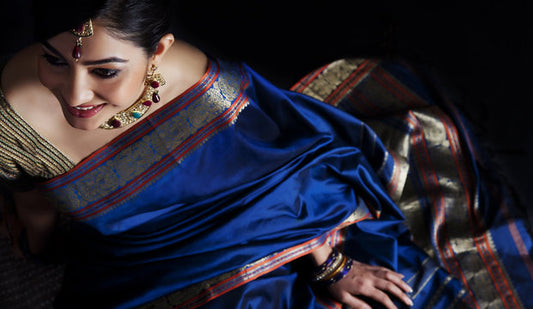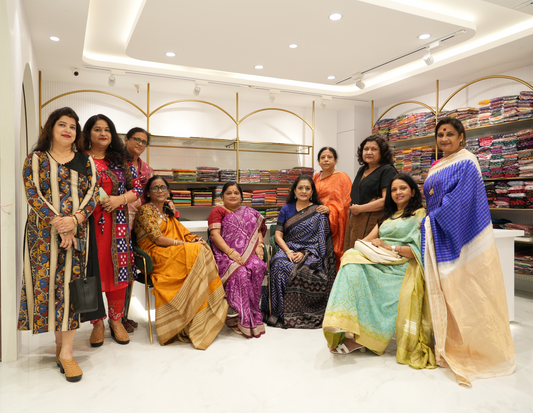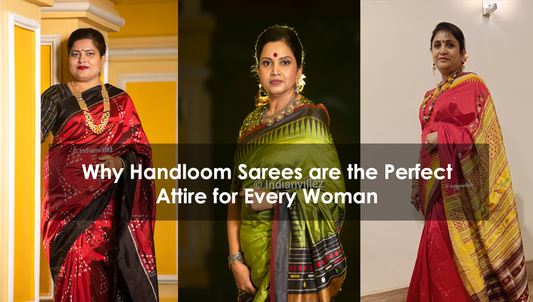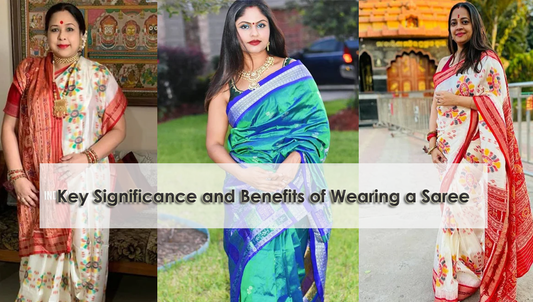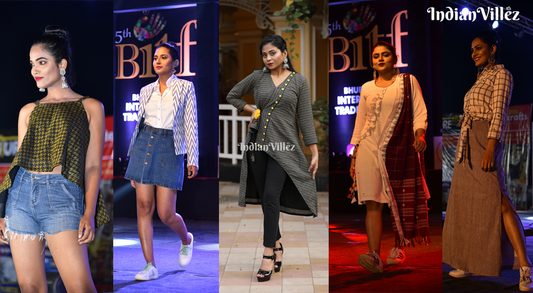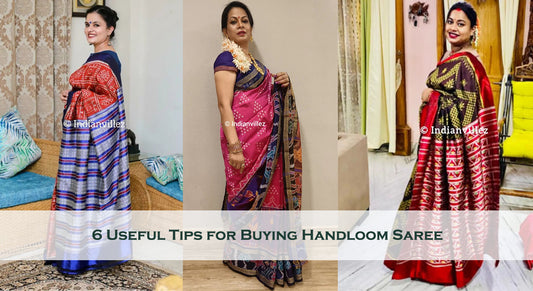Different lands, different cultures, different handlooms from each corner of India is India’s highlight. BOMKAI sarees from Odisha is one such highlight. This six-to-nine-yard fabric is weaved at the southern Odisha’s suburbs. Bomkai, this remarkable name has been entitled to the handloom after its hub of production, BOMKAI village of Chikiti Tehsil (GANJAM).
Bomaki or popularly known as SONEPURI, its supremacy has been existing from the era of its origin. The bold patterns and aristocracy have been famous since 600 BC. The class of Bomkai was so high that only Brahmins wore this attire and only during auspicious occasions. But as time rolled and superstitions disappeared this artistry was worn by every class of the civilization. Bomkai saree originated from GANJAM and widened up to SUBARNAPUR during the reign of Ramai Devi. The ornamentation and the craft on the fabric is said to be inspired from Khandagiri Caves. The motifs and designs portray mythology and well-kept secrets of the past which makes it unique. These features of the handlooms have given a status of pride to the sarees and its craftsmen.
The Hands Behind the Craft
The leading craftsmen of the craft are the “Bhulia” community of Subarnapur. The craftsmanship’s intensity is transparent in the structured and intricate work. A single marvelous piece of work requires four to five pairs of hands and almost 35 days. Motifs like tribal art, tortoise, flies, bitter gourd, lotus, bird, earthen pots, small flowers and mythological characters like Rudarksh ,Kumbha,Indra are put to adorn the elegance.

The Process of Bomkai Saree
The mechanism starts after the silk or cotton is weaved to yarn. The yarns of Bomkai sarees are then spun to bobbins and pins. The yarns are segregated for wrap and weft in different color combinations. Yarns then are measured, thereafter tying and dying are done. Until the desired pattern and coloured is gained the process of Bomkai sarees continues. On the borders, wrap alone is processed, while for Palavas and Anchal of sarees, weft is processed and overall saree designs, both the warp and weft are processed. BOMKAI sarees still use the very ancient “jaalas” for the tying method.
Striking Features of Bomkai
The uneven and discontinuous temple designs are the most striking feature of the Bomkai. The SONEPURI or BOMKAI sarees have been a recognized and glorious print all over the world. This new glimmer base of the sarees have made it more popular and alluring in the markets. The same traditional handloom print wrapped in contemporary tinge has made its way to global recognition. The value of their diligence must be taken into account to make sure the sustainability of the angelic artistry BOMKAI. The Pallavas i.e. of Bomkai Saree the borders have latticework giving solid blocks. They are also double shaded making it spectacular. The gorgeous colors have made the Bomkai silk saree suitable for all to get styled. Bomkai has been a dominant fabric at the world trade fairs.
Special Mentions of Bomkai Saree
Bomkai Saree got crowned when Kathak dancers wore it at international festivals and celebrities like AISHWARYA RAI made this a statement at her wedding. The former Miss World wore “RADHAKUNJA” a kind of Bomkai during her wedding with Abhisekh Bachchan. The three beauties were designed by Chaturbhuj Meher at Sonepur. This exquisiteness of Bomkai also holds a GI tag since 2009.
Disappearing Craft
Financial needs are one of the constraints for Bomkai Saree to be more popular among the audience. The artisans are being side-lined in creativity and colors. Government’s interference is also little to help the artisans. The unsteady financial rank of the bomkai saree artisans puts a question mark on the safeguard of the artistry. The authorities need to amend the systematic process of its production. Maybe the access to technology and subsidization would surplus the production chain to help the bomkai saree to flourish.


